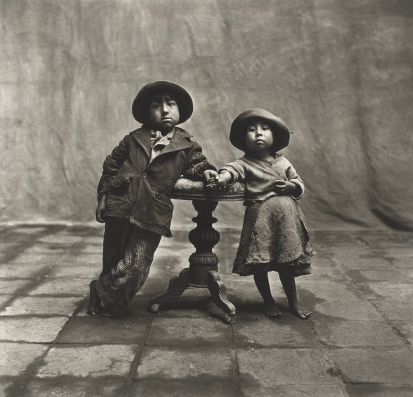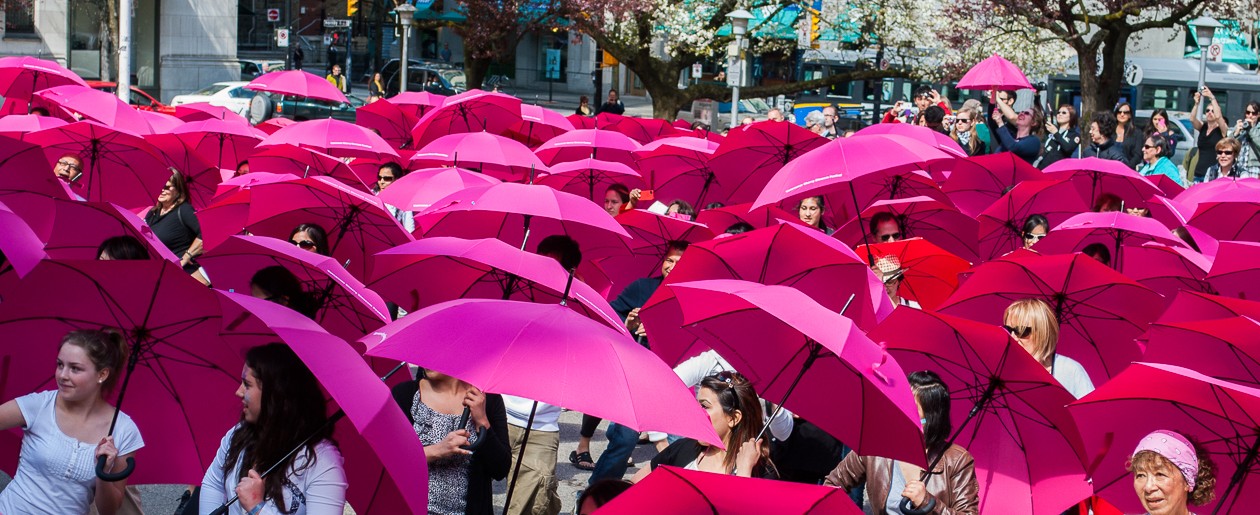My tutor suggested in her tutor report for Assignment 1, that I take a look at a journal by Julian Stallabrass, namely What’s in a Face? Blankness and Significance in Contemporary Art Photography. After much sleuthing on the internet I was able to track down a copy of this journal. Unfortunately the university where I work does not have MIT Press Journals in its database stable. I really wish OCA could get us online library privileges. The journal leaves one with much to think about and I am just making brief notes on my reading and understanding of it here.
- A distinct strand of portrait photography has emerged that can be likened to ethnographic photography. There doesn’t seem to be any clear-cut definition of ethnographic photography, so from my readings I understand it to be photography that serves a social purpose, is the study of cultures and is used to study customs, beliefs and daily life. According to Mary Warner Marien (2014: 35) “ethonographers concoted a standard, “styleless” style to connote truth.” A certain visual vocabulary is present: subjects posed either face-on or from the side; neutral expressions of the subjects and plain backgrounds. This type of photography was used widely by anthropologists and during European colonisation in third world countries.
- Photographers who shoot in this particular mode are: Rineke Dijkstra, Jitka Hanzlova, Marie-Jo Lafontaine, Gillian Wearing, thomas Ruff, Celine van Balen. Included to some extent in this list are also Joel Sternfeld, Adam Broomberg, Tina Barney and Hellen van Meene.
- Ethnographic photography has been heavily criticized for its power relations in regard to surveillance and racial classification.
- This brings us to questions around the representation of difference and identity. Objective or subjective?
- The success of the deadpan aesthetic is largely linked to the “political view of the subject under neoliberalism” (Stallabrass, 2007: 72).
- Deadpan aesthetic: “a cool, detached and keenly sharp type of photography. …emotional detachment and command on the part of the photographers. The adoption of a deadpan aesthetic moves art photography outside the hyperbolic, sentimental and subjective” (Cotton, 2009 :81)
- Neoliberalism: “Neoliberalism is a policy model of social studies and economics that transfers control of economic factors to the private sector from the public sector. … Neoliberalism has been used by various scholars, critics and analysts, mainly referring to an upspring of 19th century ideas connected to economic liberalism that began in the 1970s and 1980s. …This approach has most famously been connected to various economic policies introduced in the United Kingdom by Margaret Thatcher and in the United States by Ronald Reagan.” (Investopedia, online)
- These photographs are the direct opposite of the usual red-carpet photos seen in magazines. The subjects depict no style, no overly remarkable characteristics. They seem anonymous. The viewer does not participate with their gaze. They appear to look past (or through) us, aloof. The only participation that is allowed is that of “self-presentation before the camera” (Stallabrass, 2007:84).
- Most successful of these ethnographic photographers is Rineke Dijkstra. Her photos are straightforward, with hardly any intervention or composition. Her best know series is that of youths on a beach in Poland (see image above). She places her camera at a standard distance from her subjects and positions her camera low at waist level so that the subject is looking down slightly and thus dropping the horizon line down. This gives her subjects appear taller or larger than they are actually. She makes use of fill-in flash to illuminate her subjects thereby giving greater separation from the background. Her goal is to “get at the essential, human aspect” of her subjects (Stallabrass, 2007: 86).
- Dijkstra’s work was heavily influenced by August Sander, Bernd and Hilla Becher and Thomas Ruff.
- Irving Penn took breaks from fashion photography at various stages in his career to photograph “with simple means and simple people” (Stallabrass, 2007: 76). He used a twin reflex camera, natural northern light and a plain backdrop against which to frame his subjects. According to Penn his subjects took on “a seriousness of self-presentation that would not have been expected of simple people” (Stallabrass, 2007: 76).
- Penn actively arranged the position of his subjects, preferring front on poses, unlike Dijkstra. He also favoured placing his subjects in the centre of the frame.

- Like Penn, Avedon also took breaks from his fashion photography and toured western America looking for “others”, the very opposite of what he photographed every day.
- Avedon would put up a white paper background and shoot in diffused natural light, preferring flat light.
- Not all of Avedeon’s subjects appear to be centrally positioned and this is because Avedon stood beside his view camera while causing his subjects to revert their gaze from the camera to him. The slight off centre positioning hinted at marginality, instability (both social and mental) and disaffection. He varied his distances from his subjects and also used reflectors to bounce light. Avedon also directed his subjects.
- Avedon found his subjects at country fairs, gas stations. Kozloff states: “he wants to portray the whole American West as a blighted culture that spews out casualties by the bucket: misfits, drifters, degenerates, crackups, and prisoners-entrapped, either literally or by debasing work” (Kozloff: American Suburb X).
- Both Avedon and Penn’s non-fashion work are the very antithesis of their fashion photography. As Kozloff points out in his article, fashion photography requires the viewer (and the photographer) to admire the beautiful model/clothes. There is an element of narcissism involved and probably a sense of adoration too. There is not of that involved in their “other” work. Here the facts are presented coldly, almost brutally with no artifice whatsoever. No adoration is involved. There is more a question of “them” and “us”.
- It is clear that most ethographic photographs are printed very large at a high resolution and the details revealed in the portraits help to compensate for the lack of expression and artistic freedom, relying on the immense data to overwhelm the viewer.
- In these ethnographic photographs the viewer might see his/her own faults and flaws in our efforts to conform with society’s expectations. We just have to look at Hans Eijelboom’s work to see examples of this.
- In the past ethnographic photography applied more to the “other” – those not like us, where people were photographed in order to show their ‘strangeness’ to the world. One thinks of Diane Arbus and her freaks, Edward Sheriff Curtis and his work on the Native Americans.
- Now this deadpan aesthetic is used on subjects who are not “other”. In this globalized society that we live in today, who is the stranger among us, who is the odd one out. I have only to look at my own city to see how complex this issue of identity can be. Here we have so many nationalities represented, all of whom have become Canadian citizens. Past identities merge with new ones as a person grows from child to teenager to student to father to immigrant to citizen to grandfather … The permutations are quite endless. Identity is an unstable state.
Class is after all written deep in these apparently postclass images. They bear the mark of fundamental deficiencies in democracy, that permit the general population to be plausibly viewed through an ethnographic lens, and above all the disregard of democracy that lies at the heart of neoliberalism.
Stallabrass (2007: 90)
Reference List
Cotton, C. (2009). The Photograph as Contemporary Art. London: Thames & Hudson
Kozloff, M. (2011) Richard Avedon’s ‘In the American West’ [online] American Suburb X. Available at: http://www.americansuburbx.com/2011/01/richard-avedon-richard-avedons-in.html [Accessed 29 July, 2016]
Neoliberalism Definition [online]. Investopedia. Available at http://www.investopedia.com/terms/n/neoliberalism.asp#ixzz4FlxnxJMV
[Accessed 28 July, 2016]
Stallabrass, Julian (2007). ‘What’s in a Face? Blankness and Significance in Contemporary Art Photography’. In: October Magazine, Ltd. and Massachusetts Institute of Technology. Fall 2007, No. 122, Pages 71-90. Available at: http://www.mitpressjournals.org/doi/abs/10.1162/octo.2007.122.1.71?journalCode=octo#.V5mhQDXvn-V [Accessed 27 July, 2016]
Warner Marien, M. (2014) Photography: A Cultural History (4th edition). London: Laurence King
Images
Dijkstra, R (1992) Kolobrzeg, Poland, July 23 1992. Photograph, colour, Chromogenic print, on paper. Tate. Available at: http://www.tate.org.uk/art/artworks/dijkstra-kolobrzeg-poland-july-23-1992-p78329 [Accessed 27 July 2016]
Penn, I. (1948) Cuzco Children. Platinum/palladium print online. Available at: http://www.nga.gov/content/ngaweb/Collection/art-object-page.125440.html#relatedpages [Accessed 28 July, 2016]


This is very interesting and useful for me. Thanks!
LikeLike
I still can’t rid myself of this idea that the deadpan aesthetic doesn’t show aliveness of the subject because it reduces them almost a mannequin. Interesting as well that passport photographs have to be taken in that style.
LikeLike